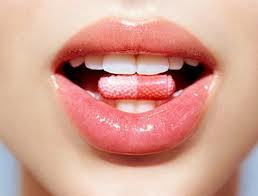Objective:
The purpose of this journal entry is to
reflect on Chapters 1-3 of Teaching Naked
by Jose Antonio Bowen.
 Reflective:
Reflective:
Bowen summed up the future of education
for me in two sentences - the opening
sentence in Chapter 1 “The new classroom is a flat screen” (Bowen, pg. 3) and in
the closing paragraph of Chapter 3, “If teaching is all about student-faculty
interaction, then we must realize that human interaction is changing” (Bowen,
pg. 49).
I cringed when I read the first sentence and ruminated on
the second one for at least an hour.
Reading
that the new classroom will be a flat screen was out-and-out alarming. Bowen's prophetical statement that human interaction is not what it used to be and will continue to change had me grinding my teeth. I will be honest and state that the material in
the 48 pages between these bookend remarks did little to provoke a response as
compared to these opening and closing comments.
 Interpretive:
Interpretive:
It
is now a rare day that I do not see people all around me using electronic
media: cell phones, MP3 players/iPods, pagers, checking social media sites, Google, YouTube,
Skype and much more. I even have at
least one patient a day at the dental office where I work asking me if it is ok
to text while they have their teeth cleaned!
(Not recommended, by the way ….).
It never occurred to me that these people may actually be in
the process of learning. I found myself analyzing my opinion about
how knowledge should be acquired and how learners should access knowledge. I mused, “I guess I am just old school.” My reaction made me realize how much I was
resisting alternative methods of learning and especially any kind of learning that illicited the help of
electronic media.
Admittedly, I have dipped my toes into the “techcom” world rather
grudgingly – my daughter recently encouraged updating my ancient (is 3 years old really ancient?)
cell phone to a fancier “smart” phone, but I have not fully accepted or been
open-minded to the way that technology is changing the way people communicate
or actually learn.

Not long ago, I stopped to pick up pizza on the way home
from work and while waiting I pulled out my cell phone, sent out a few texts,
searched an address and looked through a few free apps that I could download
into my phone. A question popped into my
mind – before cell phones what would I have done while I was waiting 15-20 minutes
for a pizza? I likely would have sat and
simply gazed out the window or straightened out the contents of my handbag and
then flipped through a three day old newspaper.
My original value judgement of anyone seen texting was as someone who
was “killing time.” Then I thought about
my own recent texts and searches and asked myself “is this a waste of
time?”
Decisional:
Learning from non-traditional sources should
not be viewed as trite. Rather than
resisting the current trend to use media for human interaction and to gain
knowledge, I have decided to embrace the idea of using media as a tool for learning, not as toys that kill
time. I realize as I write this that it does not
matter what I am texting about or what I am looking up on the Internet – the
fact is I am engaged with others and/or I am assimilating new information.
There could be an endless argument about
whether the information anyone reads from any source constitutes “a waste of time,” but it
dawned on me that using our time in this way is not the critical piece. It is enough to know that the information
acquired from these sources can be a form of learning and will have an impact in some way, shape or form. And besides …… it beats just sitting there
listening to my stomach growling for a chipotle chicken pizza …….
Reference:
Bowen, J.A. (2012). Teaching
naked: How moving technology out of your
college classroom will improve student learning (1st ed.). San
Francisco, California: Jossey-Bass







































